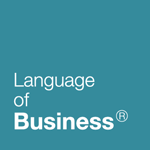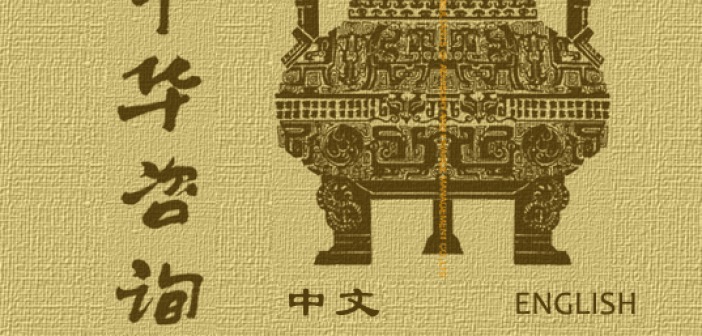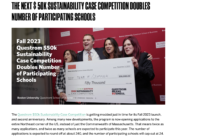This is a preface I wrote for the Special Magazine for CCAFM, our international consulting partner, in advance of the January / 2012 trip. CCAFM published a (Chinese) press release on our visit with them that included pictures.
International Consulting: The magic of numbers
I am honored, for the second year in a row, to have been asked to write the Preface for this special CCAFM magazine edition. While a full year has of course passed since our last Beijing sojourn in 2011, the late nights we spent preparing the slide decks in CCAFM’s offices, the smell of the flowers on the presentation podium, and the look of satisfaction on the clients’ faces after the three Q&A sessions, all seem like they occurred just last week. What, frankly speaking, was formerly regarded, a few years prior, as an adjunct-like academic program both in the hallways of your Yuetan North Street offices, as well as within the classrooms of Fulton Hall, now has happily become an essential part of everyone’s daily work regimen. It is truly the essence, and spirit, of a successful partnership.
Despite being in different time zones, observing diverse cultural rituals and regularly conversing in dissimilar languages, we probably still spend as much time communicating with each other, as we do interacting daily with our respective co-workers in Beijing and Chestnut Hill on other work matters. What’s more, it’s oddly comforting that each day is “book-ended” by our joint consulting work. I look forward every morning to receiving your update emails, as I’m sure you do, albeit 12 hours separated, and geographically half a world away. Just as I’m about to go to bed, you seemingly pick up where we left off a few hours prior, and vice-versa.
But beyond harnessing the power of technology to communicate, we’ve invested considerable time and energy traversing these disparate time zones to regularly meet one another in person. While in our Needham, Massachusetts home in November 2011, Daisy (Jing Jie) Fang remarked how unique it was that all of us had met in person three different times in the same calendar year. While we joke after all of these years that we’ve now become “old friends,” the underlying truth is that such a long-term partnership has enabled us to express our opinions honestly, openly and without risk of losing face or causing offense. The piece de resistance of our joint work to date, borrowing a phrase from our French counterparts in Europe, was my being asked by CCAFM’s President, Dr. Fu, to join the company’s Advisory Board this past summer as its first ever non-Chinese executive.
But the objective of this column is not to opine on the merits of our partnership, as much as to focus on the results we’ve obtained for your numerous clients. I use the term “numerous” because of how important numbers are to Mainland China. Beijing is perfectly symmetrical on a North-South axis with the Imperial Palace in the middle. The city has been expanded in a thoughtful fashion via a series of ring roads concentrically emanating from this historic nucleus. “Chengyu,” a traditional Chinese idiomatic form, usually employs four characters to write key expressions. 8 is considered the luckiest of all numbers in China, due to the fact its pronunciation of “ba” is close to the world for wealth (“fa”). In this same vein, I believe the past 365 calendar days can also best be summarized by the alliteration of the simple numerical pattern 2, 4, 6, 8.
2: In mid-February, it was announced that China had become the world’s 2nd largest economy.
4: This was the first year CCAFM and BC managed four projects at the same time. Coincidentally, four of us met for dinner in Shanghai in May 2011 and then four CCAFM executives traveled to Boston in November.
6: At the end of October, the worldwide population surpassed 6 billion people for the first time in its history, now measuring just over 7 billion.
8: This is the 8th consecutive year CCAFM and BC have been working together.
The four projects this year also have a consistent numerical theme running through them. As you’ll continue to read below, one word per paragraph has been selectively underlined, in order to emphasize this fact. Project A, on Management Systems and Risk Management, focuses on the three key areas of management: system configuration, construction and implementation. Projects B and C, by definition are all about “the numbers,” discussing the merits of ABC (Activity Based Costing) and EVA (Economic Value Added), respectively. Finally, a related aspect of project D has been the long-term financial return from investing in new renewable energy solutions.
Equally satisfying this year, I have had multiple opportunities to observe our students completing their best work. When we first began our partnership in 2003, we tackled 2 projects as a de facto test case. Then, from 2004 – 2010, three projects per year were regularly supported. In 2011, we’re still continuing to innovate and to experiment, now balancing the demands from four concurrent research studies. This year, in particular, I was truly honored that more than ¾’s of the class opted to begin its research over the summer, despite so many of our 23 members being spread out in different corners of the US and even around the globe. Despite their remote locations, they rallied to produce four strong Summer Reports in mid-August, well thought out Interim Reports in October, and strong end-of-semester “final” reports, the latter of which was sent over for discussion and translation in mid-December, and which formed the core of this week’s presentations.
By the nature of having four teams, the students have had to be that much more independent regarding each project’s content. More so than in any other year, the students in 2011 had to frequently, and unilaterally, schedule CCAFM – BC conference calls, SMS text sessions and comprehensive emails to compare detailed notes with their colleagues in Beijing. Much time has been spent composing these emails, poring over their replies and then charting next steps.
As proud as I am of my students, I’ve also been extremely impressed with the candor through which CCAFM has responded to our project queries on numerous occasions over the past few months. Several years ago, even possibly the most outlandish research conclusions from a project were still met with polite, clipped responses from the CCAFM consultants. Hen bu cuo (“not bad”) was the common refrain, more intended to keep face, than to engage in a thoughtful review of the content. But, 2011 has been measurably different. One CCAFM review email from mid-October perhaps summarized this sentiment best: “I love ICP and I am willing to spend time to improve the research with BC side all these years. But this time, I don’t know what to do! There is so little useful information in this Interim Report…”
This forthright feedback continued to manifest itself during our in-person project review on the evening of Halloween 2011, in Fulton Hall’s classroom 310. Although the session began with a plea from CCAFM to “slow down during your presentations, as the speed makes us nervous,” it quickly expanded into an extremely beneficial joint session for all. Several students later commented that this class is “like no other, and is just so incredibly cool. ICP is truly an opportunity to apply what we’re learning in school to real situations on both sides of the world.”
But, alas, the hours of preparation, the many emails sent and received, and the copious speaker’s notes written for each slide, all have to be neatly summarized, packaged, and then presented in a thoughtful manner to the senior executives at CCAFM, and more importantly to the firm’s many clients. Even though the nature of this program only enables the students to work locally for a single week, the research of the four projects is an ongoing, iterative progression. My father always used to tell me that “any company standing still, is essentially moving backwards,” as successfully running, or consulting to, a business, is a dynamic process. In short, we’ve made progress but there’s still much work remaining to be completed.
In expressing my heartfelt sentiments for what now seems to be the hundredth time in our 8-year partnership, I’m again extremely appreciative for the multi-faceted development opportunities you’ve provided our students, and, of course, to me, with this year’s projects. They have again lived up to your predictions of being in depth, challenging and rife with educational opportunities, as well as focusing on real world applications. Thank you again for your trust, and support.
But its very nature, any international consulting engagement, if completed correctly, will be replete with a plentiful range of emotions, both positive and negative. ‘Magical,’ ‘analytical’ and ‘thought provoking’ describe some of the more upbeat feelings, with ‘frustrating,’ ‘time intensive’ and ‘elusive’ balancing out one’s thoughts on the other side. But, a common thread throughout is dedication. This is perhaps the best word I can choose to summarize the spirit of the past six months of work.
In conclusion, thank you, once again, for another fine year of cooperation and successful results during the Year of the Rabbit, in 2011. As always, we look forward to continuing to deepen our friendship in the years to come. By the numbers, I’m sure we will have a multitude of opportunities to do so.




